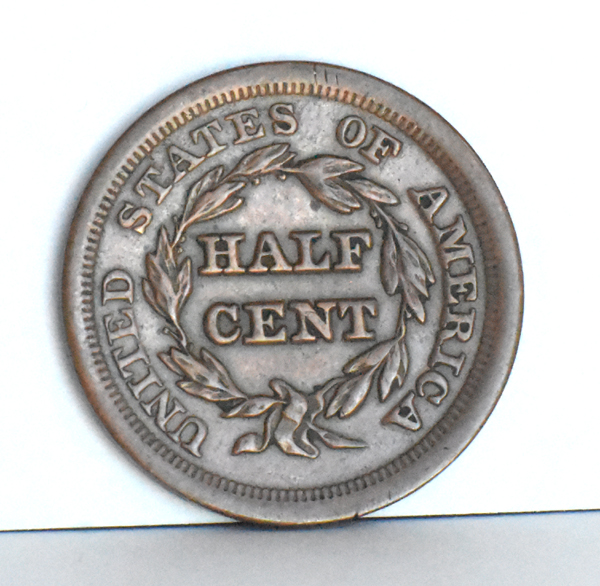Coronet Half Cent
1849 to 1857
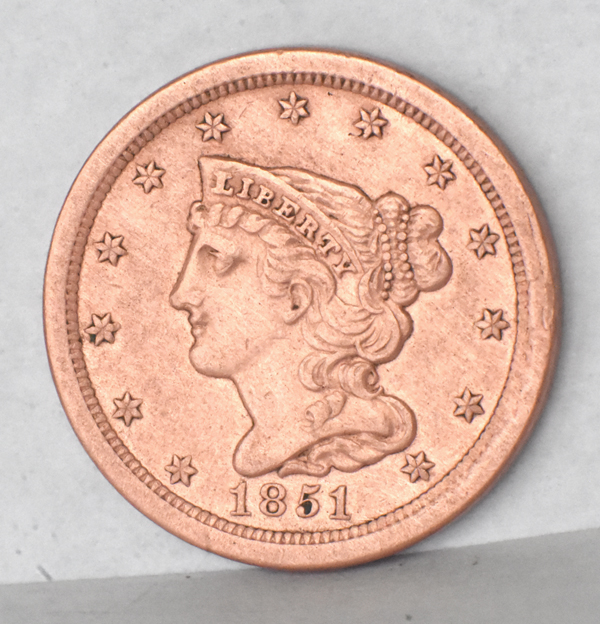 |
In 1840, the half cent was re-designed again, this time in what has been called the braided hair type. Like the draped bust and turban head designs, this one was used on other denominations of coins as well. But the half cent with this design was not put into circulation until 1849 and the 1840 through 1848 issues were proofs only and today are rare and valuable. The 1853 example below at left in my collection is in at least AU condition but I do not know whether it qualifies for a grade of 50, 53, 55, or 58. |
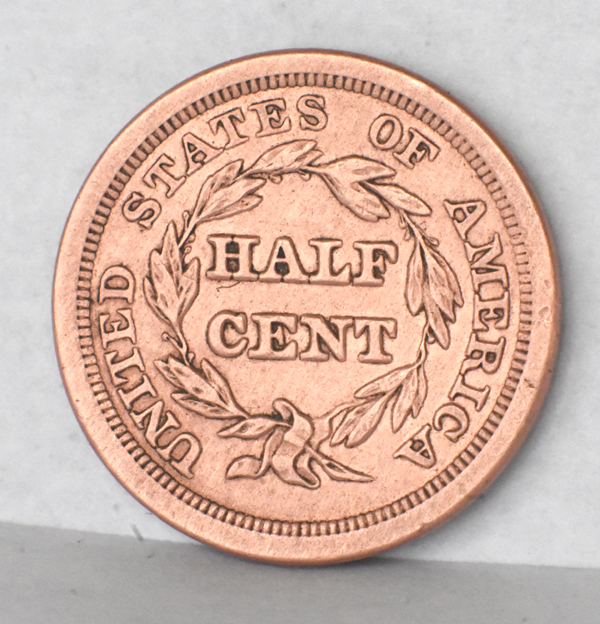 |
| This coin was sold as an EF 40 and it appears to be good enough for that grade. It has been cleaned of course and is stored in the album of Old Cents. Only 147,672 of these were minted. | This is the reverse of the coin at left. Except for the small black spots, this is how the coin looked in the 19th century when it was used in circulation. | |
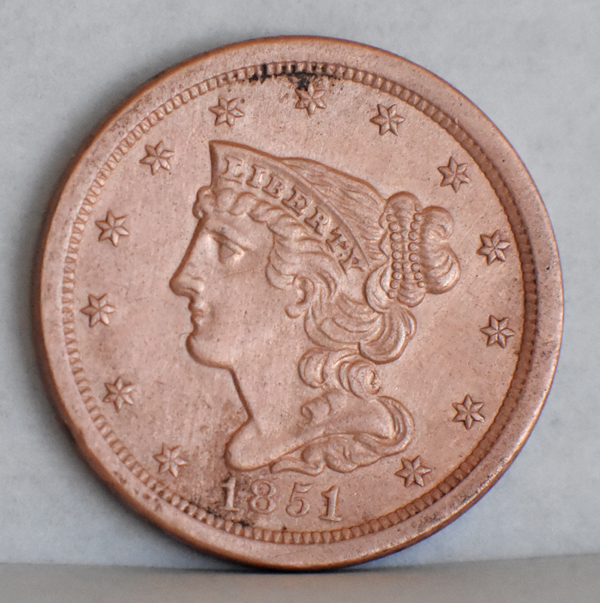 |
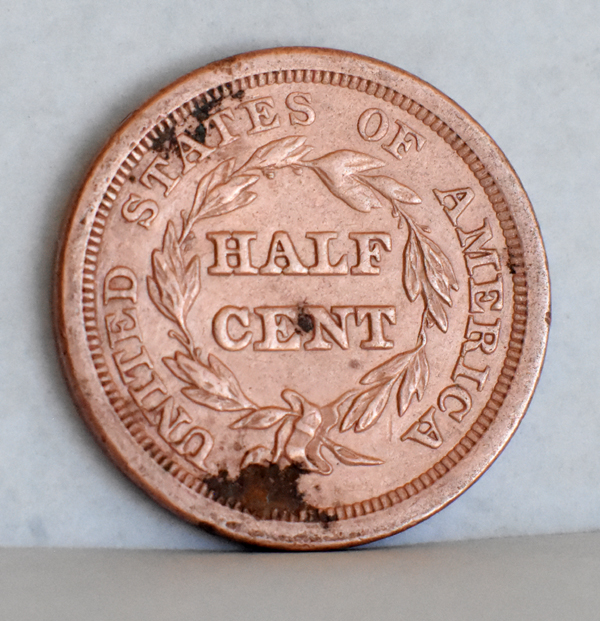 |
|
| This coin was bought for the D case and it is stored there. It cost me $95.58 and appears to be a VF 30 making worth $90 on the PCGS web site but will lose value because of the cleaning. This is what the coin looked like when it was in circulation during the middle of the 19th century. | This is the reverse of the coin at left. It has obviously been cleaned and has three very dark spots that did not come off when the coin was cleaned. | |
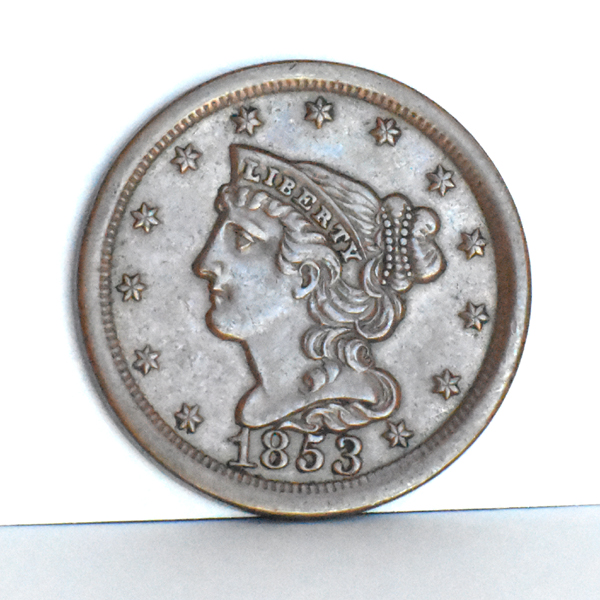 |
|
|
| My 1853 example above cost $139, is worth at least $150, and is in AU condition or might possibly be uncirculated. But the only way to be certain of that is to send it to ANACS for certification and I am not inclined to do that at this time. | This is the reverse of the coin at left. It is worth at least $150 and might be worth as much as $225. Only 129,694 of these coins were minted in 1853 and not very many are still available in this grade. |
| 1853: President-elect Franklin Pierce and his family are involved in a train wreck near Andover, Massachusetts. Pierce's 11-year-old son Benjamin is killed in the crash. April 18: Vice President William R. King dies of tuberculosis in Selma, Alabama, without having carried out any duties of the office. May: An outbreak of yellow fever kills 7,790 in New Orleans. May 6: Norwalk rail accident: A train runs off an open swing bridge into a river in Norwalk, Connecticut, killing 56. July 14: The Exhibition of the Industry of All Nations world's fair begins in New York City. August 24: Potato chips are traditionally said to have been invented on this date by George Crum in Saratoga, New York. October 4: The Great Republic, the largest wooden clipper ship ever constructed, is launched in Boston by Donald McKay. December 30: Gadsden Purchase: U.S. Ambassador James Gadsden signs a treaty to buy approximately 29,600 sq miles of land south of the Gila River and west of the Rio Grande from Mexico to facilitate railroad building in the Southwest. Date unknown: Yontoket massacre: More than 450 Tolowa people are killed at Yontocket, California, by a citizen militia from Crescent City. |
